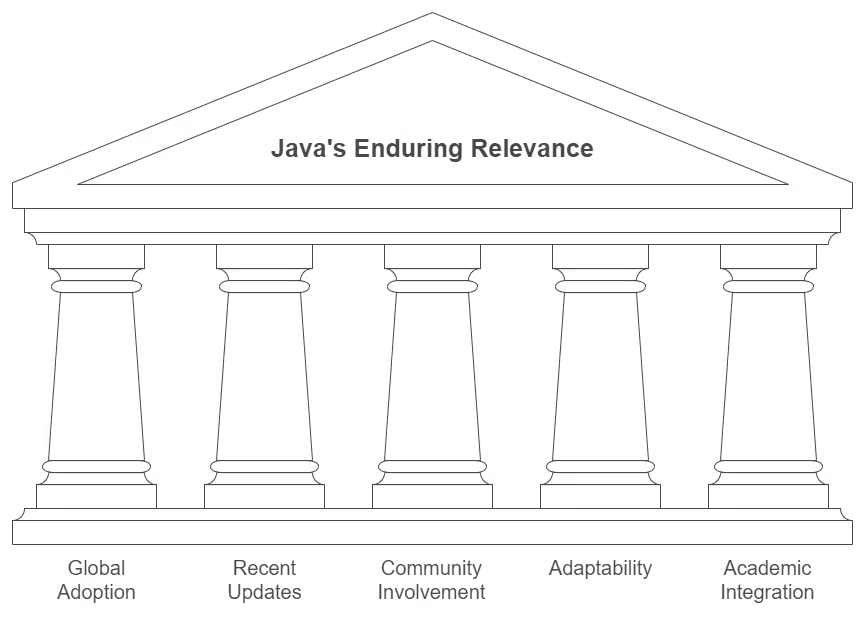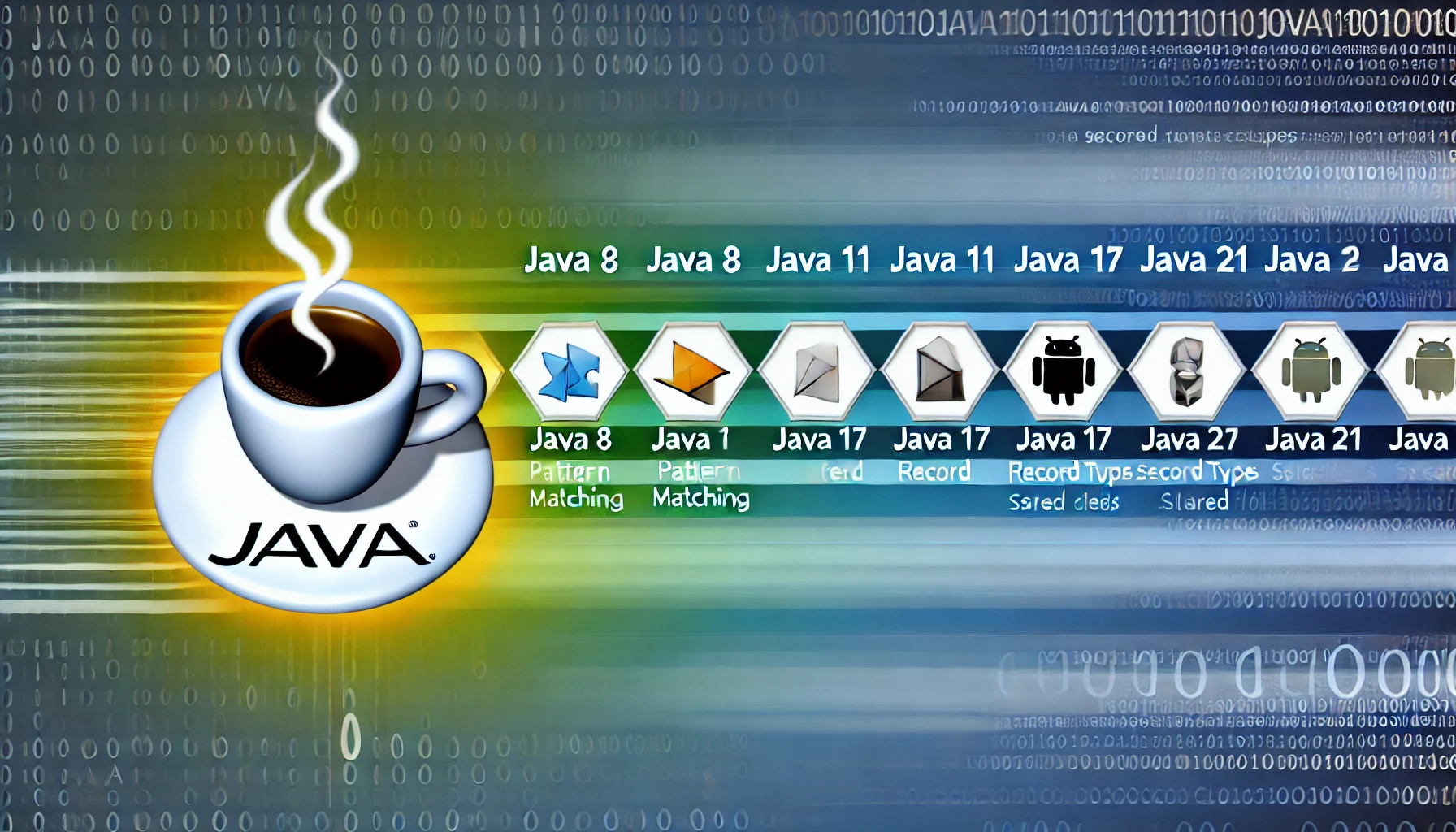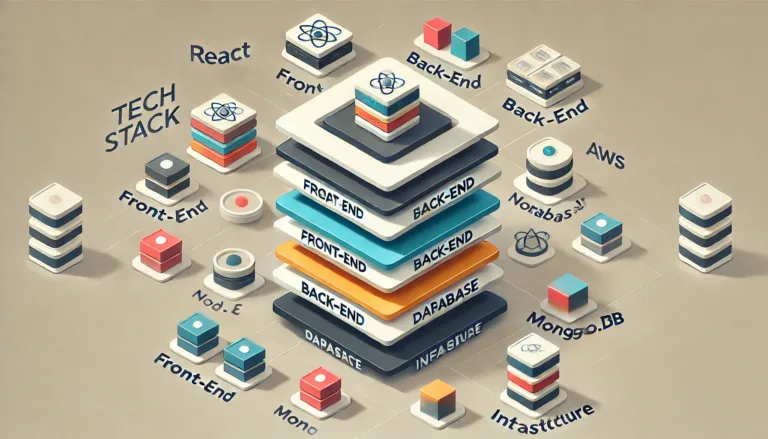Introduction
Java, a programming language that first emerged in the mid-1990s, has maintained a prominent position in the world of software development for nearly three decades. Initially developed by Sun Microsystems, Java was designed with the slogan “Write Once, Run Anywhere” (WORA), emphasizing its portability and versatility across different platforms. Over the years, it has become the backbone of enterprise-level systems, large-scale web applications, and mobile app development, especially in the Android ecosystem.
But as the tech landscape evolves, new programming languages like Python, Kotlin, and Go have entered the scene, raising a critical question: Does Java still have a future? This blog will delve into that question by exploring the current state of Java, its widespread adoption, the ongoing updates, and its role in the evolving tech landscape.

Widespread Adoption and Ecosystem
Java’s global adoption and its continued use in various industries
Java remains one of the most widely used programming languages across the globe, and its extensive ecosystem supports its continued dominance in several key areas.
- Extensive Ecosystem of Libraries, Frameworks, and Tools: Java boasts a mature and extensive ecosystem, including a rich set of libraries and frameworks like Spring, Hibernate, and JavaFX. These resources not only simplify development but also make it easier to build and maintain both new and legacy systems.
- Heavy Usage in Enterprise Environments and Large-Scale Applications: Java’s stability, security, and scalability make it the language of choice for enterprise solutions. From banking systems to e-commerce platforms, Java powers numerous mission-critical applications, making it integral to the business operations of many industries.
- Java’s Dominance in Android App Development: Since Android’s inception, Java has been the primary programming language for building mobile applications on the platform. Despite the rise of Kotlin, which is now officially supported, Java continues to have a massive presence in the Android development community, thanks to its familiarity, extensive documentation, and tooling support.
This entrenched position and widespread usage across various sectors ensure that Java will continue to be maintained and evolved for years to come, solidifying its place as a key language in software development.
Continuous Updates and Improvements
Overview of recent updates in Java (Java 17 and Java 21)
Java’s longevity in the programming world can be attributed to its consistent evolution through regular updates. The recent releases of Java 17 and Java 21 introduce several modern features that enhance both the language’s usability and its competitiveness in the ever-changing tech landscape.
- New Features such as Pattern Matching, Record Types, and Sealed Classes:
These updates showcase Java’s shift towards more concise and expressive coding practices. Pattern Matching simplifies type checks and enables developers to write cleaner code, while Record Types reduce boilerplate code by providing a streamlined way to create immutable data classes. Sealed Classes, on the other hand, give developers more control over class hierarchies, making it easier to define strict inheritance structures. - How these features modernize the language and enhance productivity:
The inclusion of these features demonstrates a strong push to align Java with newer programming paradigms, making it easier for developers to write more intuitive and maintainable code. This reduces cognitive overhead and improves overall productivity, which is especially beneficial for large-scale enterprise projects.
The continued commitment to releasing modern features positions Java as a competitive choice among newer languages like Kotlin, Python, and Rust. By embracing contemporary programming concepts, Java ensures its relevance in both new projects and the maintenance of legacy systems, securing its place in the future of software development.
Strong Community Support
Robust community involvement through open-source contributions, forums, and educational resources
One of Java’s greatest strengths lies in its vibrant and active community, which has been instrumental in keeping the language alive and evolving. With a rich history of open-source contributions, countless learning resources, and a strong presence on forums, Java’s community serves as a backbone for innovation and problem-solving.
- Platforms like Stack Overflow, GitHub, and Java-specific blogs:
Java developers have a wealth of resources at their disposal. From troubleshooting on Stack Overflow to collaborating on open-source projects on GitHub, the community ensures that newcomers and veterans alike can find the support they need. Additionally, the proliferation of Java-specific blogs and forums provides in-depth tutorials, best practices, and insights, fostering a culture of continuous learning. - Community-driven innovation and problem-solving:
The community actively contributes to the development of new libraries, frameworks, and tools, keeping Java aligned with modern software development trends. Whether it’s creating lightweight frameworks for microservices or enhancing IDE support, the community’s involvement has made Java adaptable to evolving technological demands.
The strong community backing leads to continuous growth and knowledge-sharing, making Java a dynamic and evolving language. This support network not only ensures that developers have the resources to succeed but also encourages the language to innovate and stay relevant, further solidifying its position in the programming landscape.
Versatility Across Domains
Java’s adaptability across different sectors
Java’s flexibility has allowed it to establish a presence in a variety of technical domains, proving its worth as a versatile programming language that can handle everything from enterprise web applications to mobile apps and big data processing.
- Web Development – Use of frameworks like Spring and JavaServer Faces (JSF):
Java has been a staple in web development for years, thanks to powerful frameworks like Spring and JavaServer Faces (JSF). These frameworks simplify the creation of scalable, maintainable web applications and are widely adopted for enterprise-level solutions, enabling Java to remain a dominant force in the web development space. - Mobile Development – Java as the primary language for Android apps:
Java has long been the go-to language for Android development. Despite the introduction of Kotlin, Java’s extensive support, large developer community, and comprehensive documentation ensure that it remains a significant player in the Android ecosystem. Many of the most popular Android applications today still rely heavily on Java. - Big Data Technologies – Role of Java in tools like Apache Hadoop:
In the realm of big data, Java is a foundational language for tools like Apache Hadoop and Apache Spark, which are pivotal for processing and analyzing massive datasets. These technologies leverage Java’s performance and scalability, making it essential for data-intensive applications in finance, research, and tech industries.
Java’s ability to adapt and excel in diverse domains allows it to remain a valuable tool in a range of technical environments. Whether it’s building robust web applications, developing mobile apps, or handling complex data processing, Java’s versatility ensures its continued relevance and utility in modern software development.
Future Trends Favoring Java
Java’s alignment with emerging technology trends
As the technology landscape shifts, Java has shown a remarkable ability to align with new paradigms and stay ahead of the curve. This adaptability to emerging trends makes it a reliable choice for forward-looking projects.
- Microservices Architecture – Popularity of frameworks like Spring Boot for microservices:
The rise of microservices has led to a renewed interest in Java, particularly through frameworks like Spring Boot, which simplify the development of modular, independently deployable services. Java’s maturity and Spring Boot’s flexibility make it a popular choice for companies transitioning from monolithic architectures to microservices. - Cloud Computing – Java’s compatibility with cloud platforms:
Java’s platform independence and robust performance make it an ideal fit for cloud-based applications. Cloud service providers such as AWS, Google Cloud, and Microsoft Azure offer extensive support for Java applications, enabling developers to easily build and deploy Java-based solutions on the cloud. - Concurrency Improvements – Project Loom’s enhancements in concurrency management:
Concurrency has traditionally been a complex area for Java. Project Loom, a recent initiative, aims to simplify concurrency by introducing lightweight, user-mode threads (fibers) that drastically improve the language’s ability to handle large numbers of concurrent tasks. This promises to boost Java’s performance in high-concurrency scenarios, making it even more suitable for modern, scalable applications.
These developments future-proof Java for high-performance, scalable applications, ensuring it remains competitive in a rapidly evolving landscape. By embracing trends like microservices, cloud computing, and enhanced concurrency management, Java is well-positioned to tackle the next generation of software challenges.
Educational Institutions and Job Market
Java as a staple in academic curricula
Java’s longevity and reliability have made it a foundational language in many educational institutions. It’s often the first language taught in computer science programs due to its balance of simplicity and power, which allows students to grasp core programming concepts without getting overwhelmed.
- Many universities teach Java due to its straightforward syntax and object-oriented principles:
Java’s readable syntax and focus on object-oriented programming (OOP) make it ideal for beginners. As a result, countless universities and coding bootcamps use Java as the introductory language to teach core programming constructs such as loops, data structures, and algorithms. - Prevalence of Java in job postings and its demand in the market:
Java’s enduring popularity is reflected in the job market, where it consistently ranks among the most sought-after programming skills. Major corporations in finance, tech, and retail sectors frequently list Java as a required or preferred skill in job postings, indicating sustained demand for Java expertise.
Java’s presence in academia ensures a steady influx of new developers skilled in the language. Coupled with its demand in the professional world, this pipeline of talent contributes to Java’s long-term viability, reinforcing its position as a leading language in the industry.

Conclusion
Java’s future is undoubtedly strong, supported by its widespread adoption, continuous evolution, vibrant community, versatility across domains, alignment with emerging trends, and its deep-rooted presence in education and the job market. Each of these factors plays a role in keeping Java relevant and competitive, despite the rise of newer programming languages.
Java is not just surviving—it’s thriving. Its ecosystem, consistent updates, and broad applicability ensure that it will continue to be a key player in the programming world for years to come. So, to answer the question directly: Yes, Java still has a promising future. It remains an essential tool in software development and is well-positioned to adapt to the changing needs of the tech landscape.
References
- SoftwareMill. “Two Types of Futures.” Link
- DZone. “Basics of Using Java Future and Executor Service.” Link
- Stack Overflow. “Freeing Up Resources in Completion of Java Future.” Link
- GitHub. “Future.java Source Code.” Link
- Oracle. “Java SE Documentation.” Link
- Baeldung. “Guide to java.util.concurrent.Future.” Link
- Oracle. “Java SE 8 API Documentation.” Link
FAQ
1. Is Java still relevant for new developers to learn?
Absolutely! Java remains one of the most popular programming languages and is widely used in enterprise environments, mobile development, and even big data applications. Learning Java provides a strong foundation in object-oriented programming and can open up numerous career opportunities.
2. How does Java compare to newer languages like Kotlin and Python?
While Kotlin and Python have gained popularity due to their concise syntax and ease of use, Java excels in performance, stability, and scalability. Additionally, recent updates have introduced modern features that make Java more competitive and developer-friendly.
3. What are some key industries where Java is predominantly used?
Java is heavily used in industries such as finance, e-commerce, telecommunications, and Android mobile development. Its reliability and scalability make it the go-to choice for developing large-scale, mission-critical applications in these sectors.
4. Will Java continue to evolve to keep up with new technologies?
Yes! The Java community and Oracle have demonstrated a strong commitment to evolving the language. Recent releases have included significant improvements, and ongoing projects like Project Loom and Panama are set to enhance Java’s concurrency and performance capabilities.
5. Is Java a good choice for building cloud-native applications?
Definitely. Java’s compatibility with cloud platforms, combined with frameworks like Spring Boot, makes it an excellent choice for developing cloud-native applications. Its stability and platform independence also make it ideal for building scalable microservices and serverless applications.









